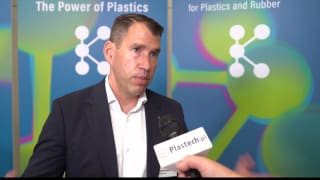 Sonoco manufacturing biodegradable readygrow planters for Metrolina Greenhouse
Sonoco manufacturing biodegradable readygrow planters for Metrolina GreenhouseSonoco is now producing biodegradable ReadyGrow planters for Metrolina Greenhouses' spring herbs. The one-quart planters were released in early March.
Made from 100 percent recycled paperboard produced in Sonoco's paper mills, ReadyGrow biodegradable planters are conveyable and sustainable in a commercial greenhouse environment and biodegrade in soil within 180 days of planting. Sonoco's patent-pending design is user-friendly and allows consumers to plant the entire container in the ground, eliminating mess and reducing the amount of plastic being sent to landfills.
Abe VanWingerden, president, Metrolina Greenhouses, said his company is excited to be the first to market with this new biodegradable planter. "Today's consumers are busier than ever, and with Sonoco's biodegradable pots they are literally able to plant it and forget it," VanWingerden said. "Growing our spring herbs in ReadyGrow pots not only makes our product more sustainable, but also reduces our total carbon footprint by leveraging a local packaging provider. Sonoco manufactures these pots in its Hartsville, S.C., plant, just 100 miles away from our greenhouse. Ultimately, it's a win for our customers, our environment and our supply chain."
"Today's marketplace demands more sustainable packaging," said James Harrell, vice president, Industrial Carriers Division. "Sonoco's new biodegradable planters help achieve these goals and are user-friendly- the pots are made from 100 percent recycled paper and biodegrade in the ground as plants grow."
With the conveyable ReadyGrow planter, retailers are able to offer a truly sustainable package that will not tear apart when watered or lifted from greenhouse trays, and consumers gain a product that is both environmentally friendly and easy to plant.
ReadyGrow pots are porous, allowing oxygen to pass through the container to the roots. Sonoco's RootGuard technology is a proprietary coating added to ensure the pot withstands greenhouse watering and maintains good water absorption while in the soil. Once planted, the coating breaks down, allowing the plant's roots to penetrate through the pot and branch out into the soil bed to absorb water and nutrients, minimizing transplant shock.


